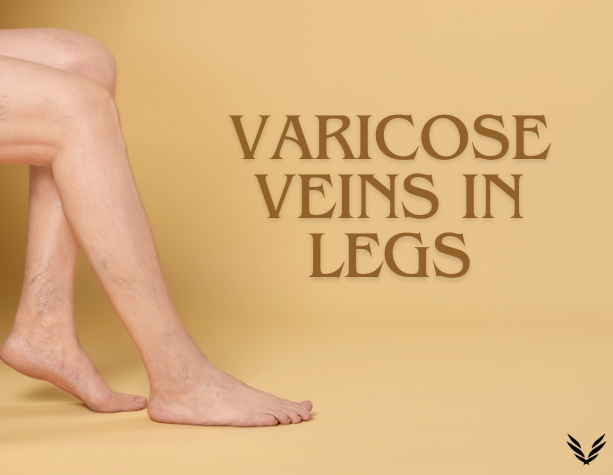What are varicose veins?
Varicose veins are a disorder in which veins in the legs grow swollen and twisted. Varicose veins are veins that are unusually enlarged and visible through the skin. They might be painful or symptomatic in some manner. Different surgical and non-surgical therapies are offered depending on symptoms and character.
Women are more likely to get varicose veins than males, and the condition has been linked to genetics. The usual starting age varicose veins in Legs are between 30 and 60, and the condition worsens with time.
What causes varicose veins in Legs?
Elevated pressure inside the leg veins is the cause of varicose veins. The role of veins is to return blood to the heart. When a person stands or sits, the veins’ valves are supposed to close, diverting blood back up to the heart rather than down the legs.
One-way valves present in numerous veins control blood flow throughout the body. When blood starts to flow back down your legs, valves guide it back to your heart. These valves are prone to deterioration and fatigue. You’ll get edema and high blood pressure in your legs if they’re not working correctly. As a result, the veins grow weaker, larger, and more twisted. Cases of Varicose veins increasing and affect 60% of the adult population due to unhealthy lifestyle.
Different types of varicose veins
- Spider Veins: Having a reddish-blue color and a thin, thread-like appearance
- Reticular Veins: Groups of tiny, blue lines that look like strings
- True varicose veins: Thick, spongy rope-like veins that protrude from the skin
How do varicose veins impact health?
The majority of individuals who have varicose veins avoid circumstances that are both hot and crowded because they are self-conscious about their looks. This may lead to feelings of both anxiety and sadness. On the other side, varicose veins might potentially lead to serious health complications.
- Bleeding from varicose veins and the development of blood clots are risks
- High blood pressure in the legs is often accompanied by feelings of heaviness, weariness, and overall malaise. If you have varicose veins, you may want to restriction your pastime stage to be able to relaxation and elevate your legs.
- Increased venous pressure, also known as stasis hyperpigmentation, may cause apparent changes in the color and texture of the skin of the inner ankle and calf.
- When pressure is applied to the lower thigh, the skin and soft tissue become inflamed, resulting in hard, red, and sensitive regions. It is common for it to be misdiagnosed as a contamination. A skin ulcer takes place whilst the pores and skin cracks and isn’t always handled.
- Leg veins that are damaged or have become weak over time create chronic venous insufficiency. When veins are unable to efficiently pump blood against gravity, blood pools in the legs, a condition known as venous insufficiency. Disabilities and other difficulties may result.
Who gets swollen, bumpy veins?
Women are much more likely to broaden varicose veins than men, despite the reality that guys are not proof against the circumstance. Additional reasons for varicose veins encompass the following:
- Pregnancy – Specifically, multiple pregnancies significantly increase the risk
- Older Age – Over time, veins get weaker
- Excessive weight – Reduced muscle mass results in less support for the veins in your legs
- Genetics – The hereditary nature of varicose veins
- Excessive time spent seated or standing – Certain jobs carry a greater risk
- Blood clots – Having high blood pressure is another factor that adds to the risk
- Changes Hormone – Hormone changes that happen because of menopause, birth control, or hormone replacement medicine
Best ways to treat varicose veins?
- Self-care and lifestyle changes, daily exercise, elevating leg, less standing or prolonged sitting, weight loss, quit smoking
- Using Quality Compression stockings
- Non-invasive office-based medical treatments
- Avoid high-heeled shoes
- Avoid leg crossing when you sit
- Surgery
What inquiry does each patient have regarding varicose veins?
The majority of sufferers are disturbing about the possibility of growing blood clots. The significant majority of humans are completely unaware of the reality that having varicose veins may additionally result in ulcers, infection, pores and skin discoloration, edema, and terrible pain. The patient has to be educated on our first visit, and we need to have a thorough conversation about the diagnostic results found in our vein clinic.
When to see your doctor about your varicose veins
- Suddenly, you notice that your leg is bloated and hurting
- A varicose veins skin starts to leak
- Your leg has a sore spot
- You get an ulcer or open sore
- If home therapy for varicose veins doesn’t relieve your symptoms, or if you have any worries about certain symptoms
- An unexpected fever or varicose vein swelling, redness, warmth, or discomfort
Book an appointment with our best vascular vein doctor
If you’re dealing with painful varicose veins, the EliteVs is here for you. Our vein specialist Dr. Nirman Tulsyan uses the most effective, up-to-date treatments. Book an appointment online or call us at 973-975-4447.
